 W
WAncient Greek religion encompasses the collection of beliefs, rituals, and mythology originating in ancient Greece in the form of both popular public religion and cult practices. The application of the modern concept of “religion” to ancient cultures has been questioned as anachronistic. The ancient Greeks did not have a word for 'religion' in the modern sense. Likewise, no Greek writer known to us classifies either the gods or the cult practices into separate 'religions'. Instead, for example, you see Herodotus speak of the Hellenes as having "common shrines of the gods and sacrifices, and the same kinds of customs."
 W
WAncient Greek funerary practices are attested widely in the literature, the archaeological record, and in ancient Greek art. Finds associated with burials are an important source for ancient Greek culture, though Greek funerals are not as well documented as those of the ancient Romans.
 W
WAncient Greek funerary vases are decorative grave markers made in ancient Greece that were designed to resemble liquid-holding vessels. These decorated vases were placed on grave sites as a mark of elite status. There are many types of funerary vases, such as amphorae, kraters, oinochoe, and kylix cups, among others. One famous example is the Dipylon amphora. Every-day vases were often not painted, but wealthy Greeks could afford luxuriously painted ones. Funerary vases on male graves might have themes of military prowess, or athletics. However, allusions to death in Greek tragedies was a popular motif. Famous centers of vase styles include Corinth, Lakonia, Ionia, South Italy, and Athens.
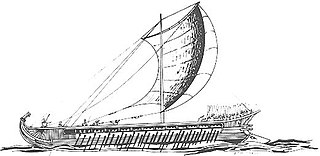 W
WAthenian sacred ships were ancient Athenian ships, often triremes, which had special religious functions such as serving in sacred processions (theoria) or embassies or racing in boat races during religious festivals. The two most famous such ships were the Paralus and the Salaminia, which also served as the messenger ships of the Athenian government in the 5th and 4th centuries BC. Other notable ships included one possibly named the Delias, a triakonter believed to be the ship in which Theseus had sailed to Crete, and which was involved in several traditional theoria to Delos; the vessel was constantly repaired by replacing individual planks to keep it seaworthy while maintaining its identity as the same ship. After the reforms of Cleisthenes, a ship was named for each of the ten tribes that political leader had created; these ships may also have been sacred ships.
 W
WBeşparmak Mountains are a ridge of many spurs located in the Muğla and Aydın provinces of Turkey, running in an east-west direction along the north shore of the former Latmian Gulf on the coast of Caria, which became part of Hellenised Ionia. The city of Latmus, located on the south slopes of Mount Latmus 25 kilometres (16 mi) east of Miletus, was originally a port on the narrow gulf, as reported by Strabo. He also states that Latmus is the same as Mount Phthires in the Catalogue of Trojans.
 W
WIn Greek mythology, the Cabeiri or Cabiri, also transliterated Kabeiri or Kabiri, were a group of enigmatic chthonic deities. They were worshiped in a mystery cult closely associated with that of Hephaestus, centered in the north Aegean islands of Lemnos and possibly Samothrace—at the Samothrace temple complex—and at Thebes. In their distant origins the Cabeiri and the Samothracian gods may include pre-Greek elements, or other non-Greek elements, such as Thracian, Tyrrhenian, Pelasgian, Phrygian or Hittite. The Lemnian cult was always local to Lemnos, but the Samothracian mystery cult spread rapidly throughout the Greek world during the Hellenistic period, eventually initiating Romans.
 W
WCharaktêres are letter-shaped signs lacking both semantic and phonetic correlations which were used as magic signs in ancient literary documents.
 W
WCharon's obol is an allusive term for the coin placed in or on the mouth of a dead person before burial. Greek and Latin literary sources specify the coin as an obol, and explain it as a payment or bribe for Charon, the ferryman who conveyed souls across the river that divided the world of the living from the world of the dead. Archaeological examples of these coins, of various denominations in practice, have been called "the most famous grave goods from antiquity."
 W
WPolytheistic religion in the Greco-Roman world of the Roman imperial period mostly comprised three main currents:the traditional religions of ancient Greece and Rome; the official Roman imperial cult; various mystery cults, such as the Dionysian and Eleusinian Mysteries and the cult of Cybele, and various eastern religions like the worship of Mithras, Isis and Christianity.
 W
WThe Delphic Sibyl was a woman from before the Trojan Wars mentioned by Pausanias writing in the 2nd century AD about stories he had heard locally. The Sibyl would have predated the real Pythia, the oracle and priestess of Apollo, originating from around the 8th century BC.
 W
WEpiphanies – or visions of gods – were reported and believed in many cities of ancient Greece. They were most commonly reported on the battlefields and, during moments of crisis, when citizens were most eager to believe that the gods of their polis were coming to assist them. An alleged visitation or manifestation of a god was known as an epiphaneia. Sometimes the gods who appeared were prominent deities, but more often, they were minor figures, whose shrines were linked to the location of a particular event or battle. The gods did not always reveal themselves to mortals, but could indicate their presence through physical signs or unusual phenomena. They could also appear to individuals, particularly in dreams, such as the reported visit by the ‘Mother of the Gods’ to Themistokles who warned of an attempt on his life and, in return for this information, demanded that his daughter be sworn into her service.
 W
WIn Ancient Greece, the Gorgoneion was a special apotropaic amulet showing the Gorgon head, used most famously by the Olympian deities Athena and Zeus: both are said to have worn the gorgoneion as a protective pendant, and often are depicted wearing it. It established their descent from earlier deities considered to remain powerful. Among other attributes, it was assumed by rulers of the Hellenistic age as a royal aegis to imply divine birth or protection, as shown, for instance, on the Alexander Mosaic and the Gonzaga Cameo.
 W
WHero cults were one of the most distinctive features of ancient Greek religion. In Homeric Greek, "hero" refers to the mortal offspring of a human and a god. By the historical period, however, the word came to mean specifically a dead man, venerated and propitiated at his tomb or at a designated shrine, because his fame during life or his unusual manner of death gave him power to support and protect the living. A hero was more than human but less than a god, and various kinds of supernatural figures came to be assimilated to the class of heroes; the distinction between a hero and a god was less than certain, especially in the case of Heracles, the most prominent, but atypical hero.
 W
WTerracotta figurines are a mode of artistic and religious expression frequently found in ancient Greece. These figurines abound and provide an invaluable testimony to the everyday life and religion of the ancient Greeks. The so-called Tanagra figurines, in fact made elsewhere as well, are one of the most important types.
 W
WIn mythology, the Greek underworld is an otherworld where souls go after death. The original Greek idea of afterlife is that, at the moment of death, the soul is separated from the corpse, taking on the shape of the former person, and is transported to the entrance of the underworld. Good people and bad people would then separate. The underworld itself—sometimes known as Hades, after its patron god—is described as being either at the outer bounds of the ocean or beneath the depths or ends of the earth. It is considered the dark counterpart to the brightness of Mount Olympus with the kingdom of the dead corresponding to the kingdom of the gods. The Underworld is a realm invisible to the living, made solely for the dead.
 W
WA herma, commonly herm in English, is a sculpture with a head and perhaps a torso above a plain, usually squared lower section, on which male genitals may also be carved at the appropriate height. Hermae were so called either because the head of Hermes was most common or from their etymological connection with the Greek word ἕρματα, which originally had no reference to Hermes at all. The form originated in ancient Greece, and was adopted by the Romans, and revived at the Renaissance in the form of term figures and atlantes.
 W
WHieros gamos or Hierogamy is a sacred marriage that plays out between a god and a goddess, especially when enacted in a symbolic ritual where human participants represent the deities.
 W
WThe Iliad is an ancient Greek epic poem in dactylic hexameter, traditionally attributed to Homer. Usually considered to have been written down circa the 8th century BC, the Iliad is among the oldest extant works of Western literature, along with the Odyssey, another epic poem attributed to Homer which tells of Odysseus's experiences after the events of the Iliad. In the modern vulgate, the Iliad contains 15,693 lines, divided into 24 books; it is written in Homeric Greek, a literary amalgam of Ionic Greek and other dialects. It is usually grouped in the Epic Cycle.
 W
WThe Kanephoros was an honorific office given to unmarried young women in ancient Greece, which involved the privilege of leading the procession to sacrifice at festivals; the highest honour was to lead the pompe (πομπή) at the Panathenaic Festival. The role was given to a virgin selected from amongst the aristocratic or Eupatrid families of Athens whose purity and youth was thought essential to ensure a successful sacrifice. Her task was to carry a basket or kanoun (κανοῦν), which contained the offering of barley or first fruits, the sacrificial knife and fillets to decorate the bull, in procession through the city up to the altar on the acropolis.
 W
WIn the typology of ancient Greek pottery, the kernos is a pottery ring or stone tray to which are attached several small vessels for holding offerings. Its unusual design is described in literary sources, which also list the ritual ingredients it might contain. The kernos was used primarily in the cults of Demeter and Kore, and of Cybele and Attis.
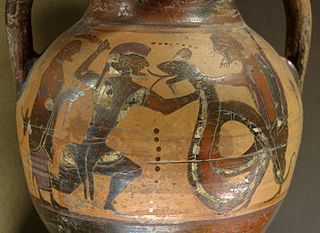 W
WAccording to Greek mythology, the Korybantes or Corybantes were the armed and crested dancers who worshipped the Phrygian goddess Cybele with drumming and dancing. They are also called the Kurbantes in Phrygia.
 W
WKykeon was an Ancient Greek drink of various descriptions. Some were made mainly of water, barley and naturally occurring substances. Others were made with wine and grated cheese. It is widely believed that kykeon usually refers to a psychoactive compounded brew, as in the case of the Eleusinian Mysteries. A kykeon was used at the climax of the Eleusinian Mysteries to break a sacred fast, but it is also mentioned as a favourite drink of Greek peasants.
 W
WPythia was the priestess presiding over the Oracle of Apollo at Delphi. There are more than 500 supposed oracular statements which have survived from various sources referring to the oracle at Delphi. Many are anecdotal, and have survived as proverbs. Several are ambiguously phrased, apparently in order to show the oracle in a good light regardless of the outcome. Such prophecies were admired for their dexterity of phrasing. The following list presents some of the most prominent and historically significant prophecies of Delphi.
 W
WThe study of magic in the Greco-Roman world is a branch of the disciplines of classics, ancient history and religious studies. In classical antiquity, including the Hellenistic world of ancient Greece and ancient Rome, historians and archaeologists view the public and private rituals associated with religion as part of everyday life. Examples of this phenomenon are found in the various state and cult temples, Jewish synagogues, and churches. These were important hubs for ancient peoples, representing a connection between the heavenly realms and the earthly planes. This context of magic has become an academic study, especially in the last twenty years.
 W
WMount Lykaion is a mountain in Arcadia, Greece. Lykaion has two peaks: Stefani to the north and St. Ilias to the south where the altar of Zeus is located.
 W
WA nymphaeum or nymphaion, in ancient Greece and Rome, was a monument consecrated to the nymphs, especially those of springs.
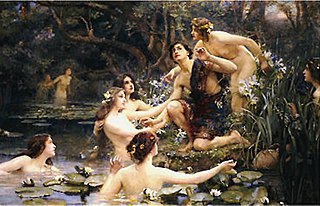 W
WNympholepsy is the belief of the ancient Greeks that individuals could be possessed by the nymphs. Individuals who considered themselves nympholepts would display a great religious devotion to the nymphs. An example is Archedemos of Thera, who built the sanctuary of the nymphs in the Vari Cave northeast of Attica, Greece.
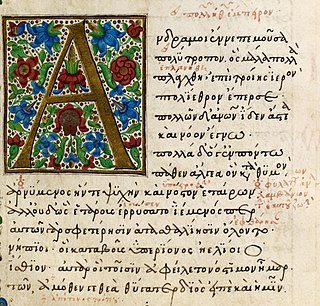 W
WThe Odyssey is one of two major ancient Greek epic poems attributed to Homer. It is one of the oldest extant works of literature still read by contemporary audiences. As with the Iliad, the poem is divided into 24 books. It follows the Greek hero Odysseus, king of Ithaca, and his journey home after the Trojan War. After the war itself, which lasted ten years, his journey lasted for ten additional years, during which time he encountered many perils and all his crew mates were killed. In his absence, Odysseus was assumed dead, and his wife Penelope and son Telemachus had to contend with a group of unruly suitors who were competing for Penelope's hand in marriage.
 W
WIn ancient Greek religion, an orgion was an ecstatic form of worship characteristic of some mystery cults. The orgion is in particular a cult ceremony of Dionysos, celebrated widely in Arcadia, featuring "unrestrained" masked dances by torchlight and animal sacrifice by means of random slashing that evoked the god's own rending and suffering at the hands of the Titans. The orgia that explained the role of the Titans in Dionysos's dismemberment were said to have been composed by Onomacritus. Greek art and literature, as well as some patristic texts, indicate that the orgia involved snake handling.
 W
WOrnithomancy is the practice of reading omens from the actions of birds followed in many ancient cultures including the Greeks, and is equivalent to the augury employed by the ancient Romans.
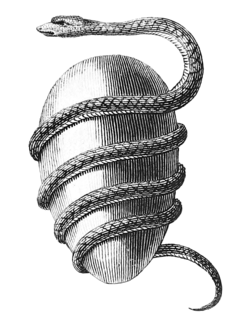 W
WThe Orphic Egg in the Ancient Greek Orphic tradition is the cosmic egg from which hatched the primordial hermaphroditic deity Phanes/Protogonus who in turn created the other gods. The egg is often depicted with the serpent-like creature, Ananke, wound about it.
 W
WOrphism is the name given to a set of religious beliefs and practices originating in the ancient Greek and Hellenistic world, as well as from the Thracians, associated with literature ascribed to the mythical poet Orpheus, who descended into the Greek underworld and returned. Orphics revered Dionysus and Persephone. Orphism has been described as a reform of the earlier Dionysian religion, involving a re-interpretation or re-reading of the myth of Dionysus and a re-ordering of Hesiod's Theogony, based in part on pre-Socratic philosophy.
 W
WA Panhellenic sanctuary was a holy sanctuary, shrine or holy place of worship in Ancient Greece, that was open to all Greeks regardless of the city-state it belonged to. These holy places were often the subject of pilgrimages from all the Greek world.
 W
WPhallic processions are public celebrations featuring a phallus, a representation of an erect penis.
 W
WPhanes or Protogonus was the mystic primeval deity of procreation and the generation of new life, who was introduced into Greek mythology by the Orphic tradition; other names for this Classical Greek Orphic concept included Ericapaeus or Erikepaios and Metis ("thought").
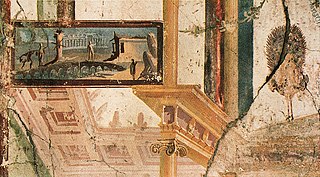 W
WIn the modern study of the culture of ancient Greece and Magna Graecia, a pinax (πίναξ), meaning "board", is a votive tablet of painted wood, or terracotta, marble or bronze relief that served as a votive object deposited in a sanctuary or as a memorial affixed within a burial chamber. Such pinakes feature in the classical collections of most comprehensive museums.
 W
WThe Pitsa panels or Pitsa tablets are a group of painted wooden tablets found near Pitsa, Corinthia (Greece). They are the earliest surviving examples of Greek panel painting.
 W
WA ploutonion is a sanctuary specially dedicated to the ancient Greek god Plouton. Only a few such shrines are known from classical sources, usually at locations that produce poisonous emissions and were considered to represent an entrance to the underworld.At Eleusis, the ploutonion was near the north entrance to the sacred district (temenos). It was built by Peisistratos in the 6th century BC and rebuilt two centuries later, when the Eleusinian mysteries were at the height of their influence. The cave was the traditional site of the birth of the Divine Child Ploutos. The Greek geographer Strabo mentioned three sites as having a ploutonion. One was on a hill between Tralleis and Nysa. Its precinct encompassed a sacred grove, a temple dedicated to Plouton and Persephone, and an adjoining cave called the Charonion, after the ferryman of the dead. According to Strabo, it "possesses some singular physical properties" and served as a shrine for healing and a dream oracle (incubation). Pluto's Gate, the ploutonion at Phrygian Hierapolis, was connected to the local cult of Cybele. Inhaling its vapors was said to be lethal to all living things except the Galli, the goddess's eunuch priests. During the Roman Imperial era, the cult of Apollo subsumed existing religious sites there, including the ploutonion. Archaeological excavations in the 1960s showed that the ploutonion had been located within the sacred precinct of Apollo: "it consisted of a natural opening along a wall of travertine, leading to a grotto in which streams of hot water gushed forth to release a noxious exhalation". This site was also associated with a dream oracle; the Neoplatonist Damascius dreamed that he was Attis in the company of the Great Mother. Strabo further records that Lake Avernus in Italy had been taken as a ploutonion because the gases it produced were so noxious that they overwhelmed birds flying overhead. According to earlier sources, he says, this was the oracle of the dead (nekumanteion) sought by Odysseus in Book 11 of the Odyssey; Strabo, however, seems not to have himself regarded Avernus as a ploutonion. There was a Ploutonion at Acharaca.
 W
WPromanteia was the privilege, bestowed upon cities or individuals by the Oracle of Delphi, to ask the Pythia in priority.
 W
WA sacrificial tripod is a three-legged piece of religious furniture used for offerings or other ritual procedures. As a seat or stand, the tripod is the most stable furniture construction for uneven ground, hence its use is universal and ancient. It is particularly associated with Apollo and the Delphic oracle in ancient Greece, and the word "tripod" comes from the Greek meaning "three-footed".
 W
WSit tibi terra levis is a Latin inscription used on funerary items from ancient Roman times onwards. The English language translation is approximately "May the earth rest lightly on you" or "May the ground be light to you"; the more literal, word by word, translation, is sit "may be", tibi "to you", terra "ground, soil", levis "light".
 W
WThe Temple of Apollo Zoster is an ancient Greek temple, the remains of which are located at Vouliagmeni in Athens, Greece.
 W
WThe Temple of Artemis or Artemision, also known as the Temple of Diana, was a Greek temple dedicated to an ancient, local form of the goddess Artemis. It was located in Ephesus. It was completely rebuilt twice, once after a devastating flood and three hundred years later after an act of arson, and in its final form was one of the Seven Wonders of the Ancient World. By 401 AD it had been ruined or destroyed. Only foundations and fragments of the last temple remain at the site.
 W
WA thymiaterion is a type of censer or incense burner, used in the Mediterranean region since antiquity for spiritual and religious purposes and especially in religious ceremonies.
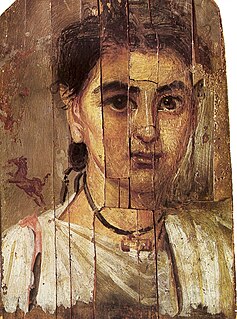 W
WTotenpass is a German term sometimes used for inscribed tablets or metal leaves found in burials primarily of those presumed to be initiates into Orphic, Dionysiac, and some ancient Egyptian and Semitic religions. The term may be understood in English as a "passport for the dead". The so-called Orphic gold tablets are perhaps the best-known example.
 W
WVoces magicae are Ancient Roman magical words, written in either Ancient Greek or Latin.
 W
WA votive column is the combination of a column (pillar) and a votive image.
 W
WA wreath is an assortment of flowers, leaves, fruits, twigs, or various materials that is constructed to form a ring.
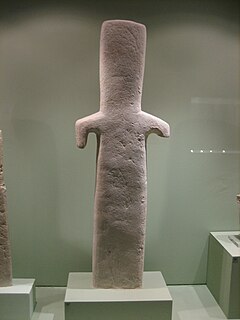 W
WA xoanon was an Archaic wooden cult image of Ancient Greece. Classical Greeks associated such cult objects, whether aniconic or effigy, with the legendary Daedalus. Many such cult images were preserved into historical times, though none are known to have survived to the modern day, except as copies in stone or marble. In the 2nd century CE, Pausanias described numerous xoana in his Description of Greece, notably the image of Hera in her temple at Samos. "The statue of the Samian Hera, as Aethilos [sic] says, was a wooden beam at first, but afterwards, when Prokles was ruler, it was humanized in form". In Pausanias' travels he never mentions seeing a xoanon of a "mortal man".